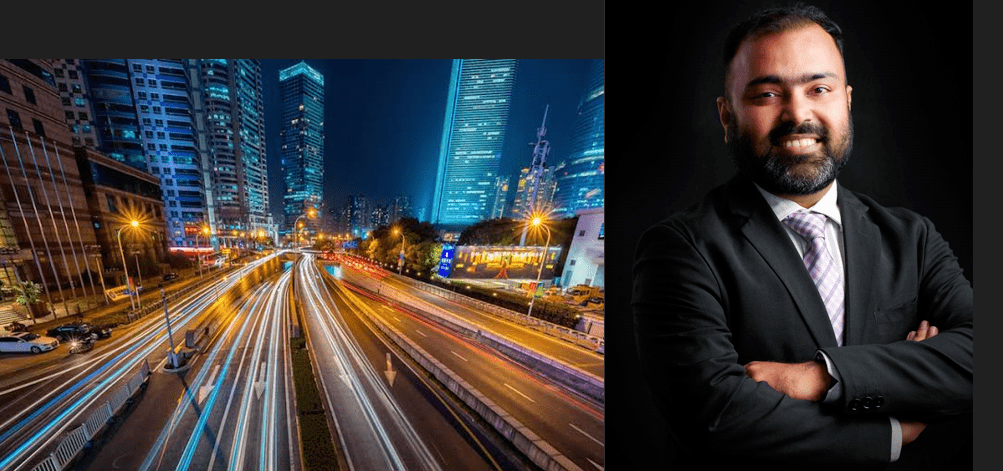The narrative of the urban landscape is one of constant evolution. Fuelled by a burgeoning population, the country is witnessing an unprecedented surge in urbanisation. This rapid transformation presents immense opportunities but also throws into sharp relief the pressing need for sustainable and inclusive development. While the ambitious smart cities mission seeks to propel cities into the future, a crucial aspect often remains overlooked: “road safety.”
India has emerged as the frontrunner in a global race that nobody wants to win. Ranking first among 199 countries, it holds the distinction of having the highest number of road accident deaths. This sad reality underscores the urgent need for a paradigm shift in our approach to urban mobility.
Traditional, car-centric infrastructure prioritises speed over safety, often neglecting pedestrians, cyclists, and vulnerable road users. Ignoring this issue would be akin to building cities on an unstable foundation.
Integrating road safety into the very core of smart city planning is not merely a prudent urban planning practice; it is an absolute necessity for nurturing livable, sustainable, and truly intelligent cities.
Key strategies for integrating road safety into urban planning
Infrastructure upgrades
The transformation of urban infrastructure is pivotal to constructing safer cities, with a specific emphasis on road safety. Intelligent traffic signal systems that dynamically adapt to real-time conditions and the integration of smart pedestrian crossings prioritise both optimisation of traffic flow and the enhancement of pedestrian safety. Initiatives in road redesign and engineering concentrate on high-risk corridors, implementing measures such as road narrowing, median barriers, and dedicated bus lanes to bolster overall safety. Green infrastructure elements, including trees and landscaping, not only add to visual appeal but also significantly contribute to creating safer and more aesthetically pleasing urban spaces.
A notable example of such infrastructure upgrades can be observed in the implementation of the safe system approach to enhance road safety along NH-16. This initiative includes widening the road, installing median barriers, crash cushions, and clear signage. Strict enforcement of speed limits, aided by speed cameras and digital displays, has been pivotal in curbing speeding in high-risk zones. Additionally, road engineering solutions like speed humps and delineators have been employed to calm traffic, particularly around pedestrian crossings and school zones.
Data-driven decision-making
Precision analytics and real-time monitoring play integral roles in establishing a data-driven road safety framework within the context of urban planning in India. Utilising sophisticated data analytics tools enables the continuous assessment of traffic patterns, accident occurrences, and congestion points. The integration of artificial intelligence facilitates predictive modeling, empowering authorities to forecast potential hazards and implement preventive measures proactively. Safety analyst is a software tool for analysing crash data and assessing safety performance on road networks. It focuses on analysing historical crash data to identify high-risk locations, predict crash frequency and severity, and prioritise safety improvements. iRAP software is used by road authorities and consultants for safety assessments and advocating safer road designs. A compelling case study from showcases the positive outcomes of employing data-driven decision-making to optimise traffic flow during peak hours and special events, fostering a safer and more adaptive urban environment.
Community engagement
In the quest for road safety, engaging communication strategies and comprehensive educational programs stand as indispensable pillars. Leveraging innovative channels such as social media allows authorities to disseminate road safety information effectively to a diverse audience. Educational programs tailored for various demographics, ranging from schoolchildren to seasoned drivers, have become essential tools for instilling responsible road behaviour. By incorporating road safety education into school curricula and encouraging community participation through workshops and seminars, a culture of collective responsibility can be nurtured. Also, collaborations with influencers, community leaders, and local celebrities amplify the reach and impact of awareness campaigns, creating a broader impact. One great example of community engagement to enhance road safety is the Rakshak Operation, which trains community members as first responders to provide swift medical assistance within the critical first hour after an accident. This fosters a collective sense of responsibility and ownership among the community and makes them agents of change.
Interagency collaboration
A unified front for road safety necessitates the establishment of centralised communication platforms and collaboration between urban planning authorities, law enforcement, and emergency services. These platforms facilitate real-time information exchange and interoperable technologies, significantly enhancing coordination during emergencies.
Regular joint training exercises and simulations involving different agencies contribute to the continuous enhancement of collective response capabilities. Standardised protocols for communication and collaboration during accidents or emergencies provide a structured approach to handling critical situations. An outstanding example showcasing effective interagency collaboration is the iRAD/eDAR Project by MoRTH, which aims to digitise accident reports to create a comprehensive nationwide database. This collaborative effort involves multiple agencies working together to collect, organise, and analyse accident data, thereby gaining insights into the causes and patterns of road accidents across the country.
By pooling resources and expertise from various stakeholders, including law enforcement agencies, transportation departments, and health authorities, the project facilitates a coordinated response to road safety challenges, leading to more effective interventions and improved outcomes.
Inclusive design
Designing urban spaces with inclusivity in mind is both a moral imperative and a strategic necessity for road safety. Ensuring universal accessibility involves crafting roads and sidewalks that accommodate individuals with varying levels of mobility, including those with disabilities. Implementation of tactile paving and auditory signals at crossings assists visually impaired pedestrians, actively promoting safety for all. The provision of dedicated and safe cycling lanes, separated from vehicular traffic, contributes significantly to a cyclist-friendly infrastructure. Integrating bike-sharing programs and securing bicycle parking facilities actively encourages sustainable and safe commuting options. Inclusive public spaces, equipped with amenities for all individuals irrespective of age or physical abilities, create environments prioritising safety, social interaction, and community engagement in a holistic manner.
(The author, Amit Patjoshi, is the CEO, of Palladium India.)




